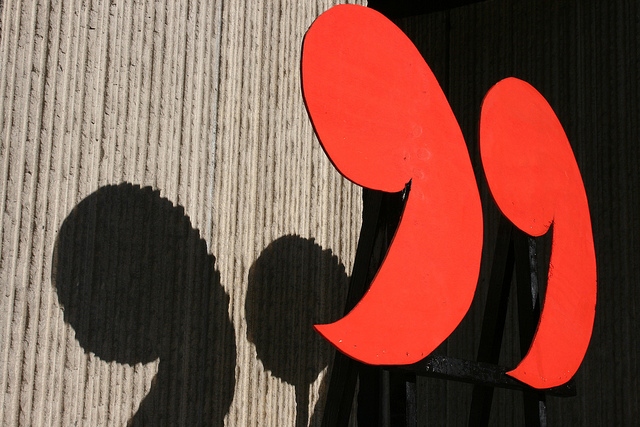New from Mozambique: The Poetry of Punctuation, and More
Posted on March 31, 2019

April's issue of Words Without Borders features a selection of poetry from Mozambique, including three playful, visual poems from the architect, artist, and author Hélder Rafael Faife.
In the introduction to the mini-collection, translator Sandra Tamele writes about coming across the book in which those poems first appeared:
I was intrigued by the title: De(s)igns, Childsplay for Grown-ups, and the brown textured cover with what seemed to be doodles on it [image – Ed.s]. It is a seemingly weightless book, composed of short poems and childish drawings that Hélder’s four daughters traced all over his walls, his work, his manuscripts and even his passport. I devoured the verses and couldn’t help but begin to translate the poems . . .
All three of the Faife poems featured in WWB would work well in the classroom: they are accessible and humorous, yet deeply poignant. The first, "De(s)igns," describes a girl drawing on a "bare skinned wall," as Faife's daughters did:
With every stroke of her pencil
the little girl unfurls dreams
and traces childhood’s uncertain roadmaps.
If you teach this poem, you might then invite students to write their own poetry inspired by children's drawings---pairing them with younger children at a nearby school, or having them look at collections of children's art, online, via an app or in print.
The second poem, entitled "Punctuation," explores the meanings of our marks as it narrates a conversation between a child and an adult. A little girl stares "Without commas in her gaze," and asks, “Is growing up for real or make-believe?” The adult narrator is lost for words: "Dot dot do, I gasped."
Students may immediately, intuitively grasp the metaphors in the poem, or they may need some need some time to delve into the lines and check their understandings. In the latter case, it might be helpful to assign individual punctuation marks discussed in the poem to small groups of students to discuss and share with the class.
You might also have students discuss some of their own experiences with punctuation, asking them such questions as:
- Is punctuation different in other languages the students know?
- Do the marks seem to resemble any objects in the real world? (See the poem's comparison to ice-cream cones and fishing hooks.)
- Has anyone ever had questions about how to use punctuation marks?
Students can read "Punctuation" alongside work from Emily Dickinson, who uses non-standard punctuation to powerful effect.
As a culminating project, students can write poems inspired by the punctuation marks of their choosing, or poems depicting conversations with people either much younger or much older than themselves. (An interesting pairing for the second assignment might be J.D. Salinger's "For Esmé—with Love and Squalor," collected in Nine Stories.)
The third poem, "The End," has an elegiac tone, addressing an aging tree and a child at childhood's end. It would pair well with Gerald Manley Hopkins' "Spring and Fall", as well as with other contemporary poetry inspired by the natural world, such as the Japanese poems "Do Not Tremble" and "Riverwilt."
Sandra Tamele's introduction sketches the current literary landscape in Mozambique. For additional background on Faife and other poets from Mozambique, educators and advanced students might read a critical essay, "Literary Voices of Luanda and Maputo" A Struggle for the City," published in the Journal of Lusophone Studies and available as a free pdf.




